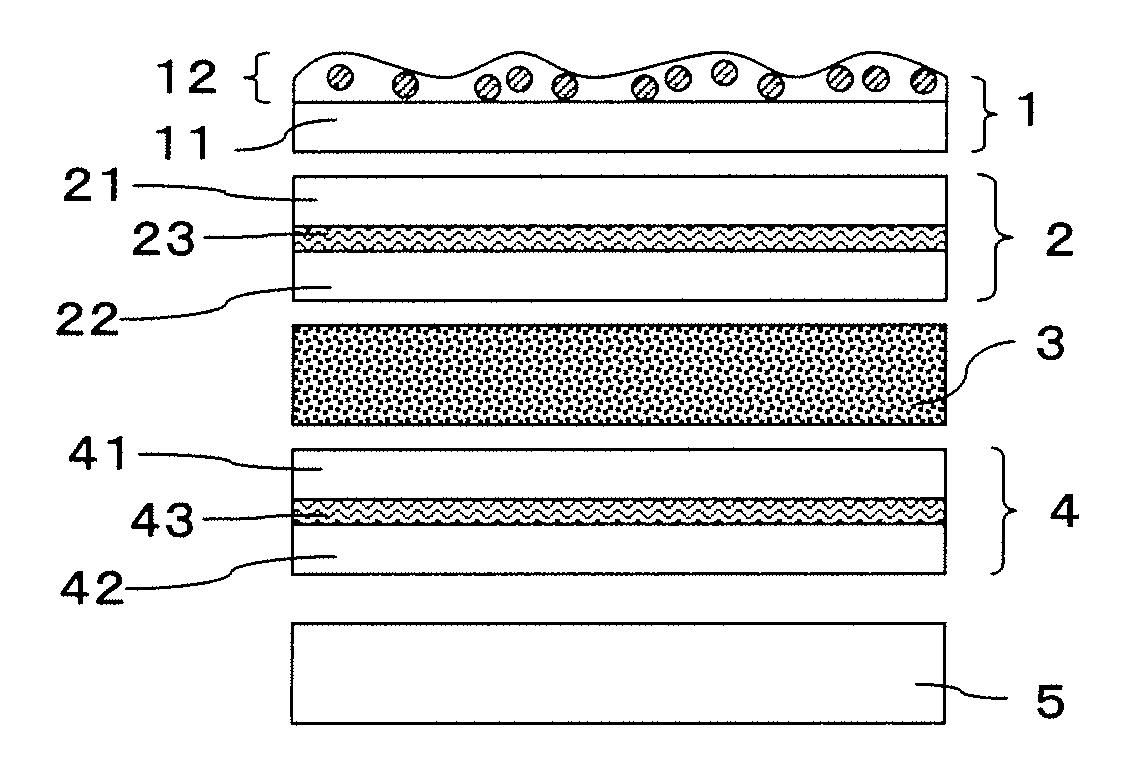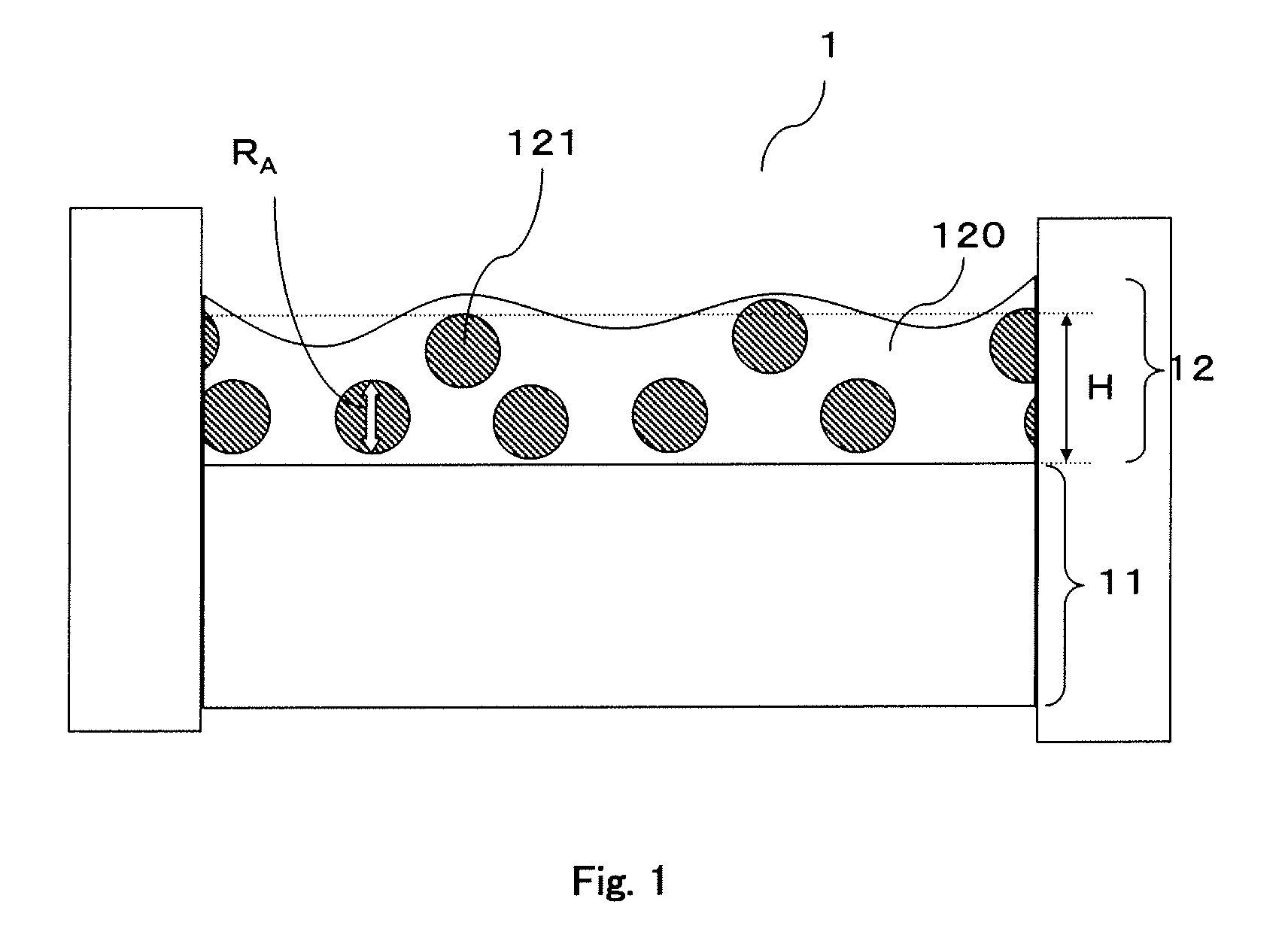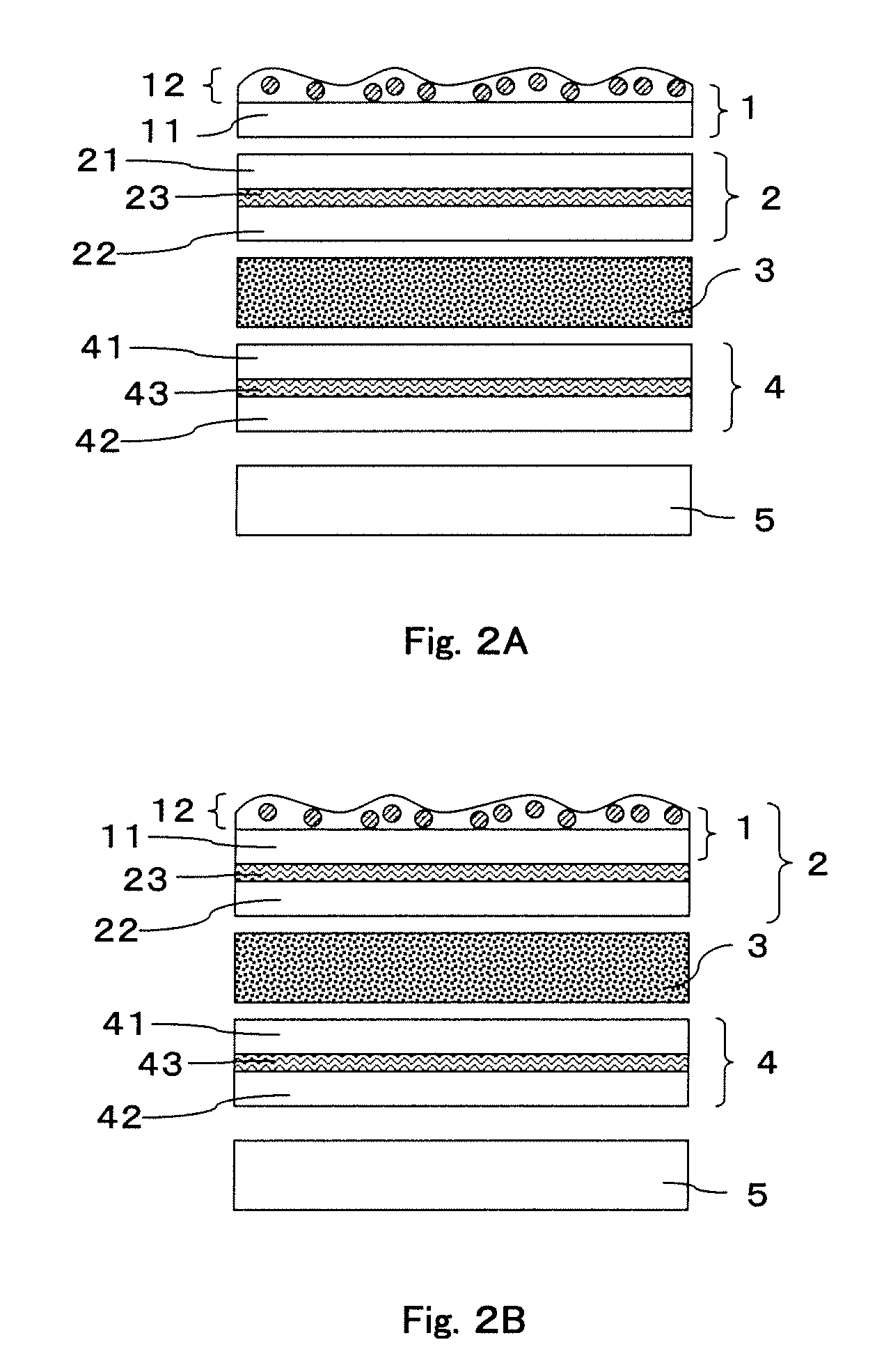Antiglare Film
a film and anti-glare technology, applied in the field of anti-glare film, can solve the problems of continuous appearance of defects spaced by roll pitch on the film, and achieve the effect of high visibility and high contrast performan
- Summary
- Abstract
- Description
- Claims
- Application Information
AI Technical Summary
Benefits of technology
Problems solved by technology
Method used
Image
Examples
example 1
[0113]A triacetyl cellulose film (TD-80U by Fuji Photo Film Corp.) was used as a transparent substrate. 94.5 parts by weight of a pentaerythritol triacrylate having a hydroxyl group in a molecule (PE3A: Acrylic material 1A) as the binder matrix forming material, 5.0 parts by weight of Irgacure 184 (by Ciba Japan K.K.) as a polymerization initiator, and 0.5 parts by weight of BYK 350 (by BYK-Chemie Japan K.K.) as an acrylic additive were used as the coating liquid for forming an antiglare layer. In addition, 9.0 parts by weight of acrylate-styrene copolymer particles with 6.0 μm of average diameter and 1.560 of refractive index were used as the acrylate-styrene copolymer particles. These acrylate-styrene copolymer particles were copolymer particles of MMA and styrene. Further, a mixed solvent of 30 parts by weight of dioxolan and 70 parts by weight of toluene was used as the solvent.
[0114]The coating liquid for forming an antiglare layer, which was prepared from the binder matrix for...
PUM
| Property | Measurement | Unit |
|---|---|---|
| thickness | aaaaa | aaaaa |
| thickness | aaaaa | aaaaa |
| size | aaaaa | aaaaa |
Abstract
Description
Claims
Application Information
 Login to View More
Login to View More - R&D
- Intellectual Property
- Life Sciences
- Materials
- Tech Scout
- Unparalleled Data Quality
- Higher Quality Content
- 60% Fewer Hallucinations
Browse by: Latest US Patents, China's latest patents, Technical Efficacy Thesaurus, Application Domain, Technology Topic, Popular Technical Reports.
© 2025 PatSnap. All rights reserved.Legal|Privacy policy|Modern Slavery Act Transparency Statement|Sitemap|About US| Contact US: help@patsnap.com



